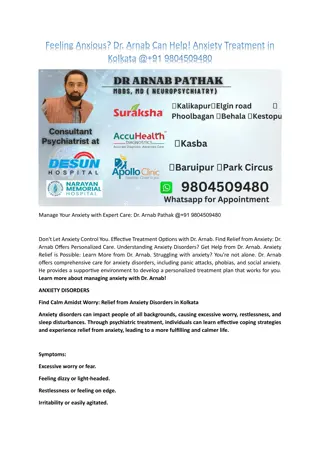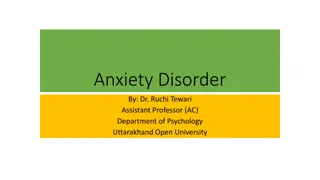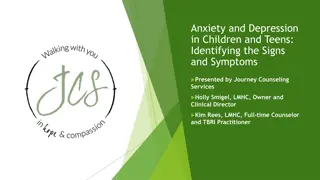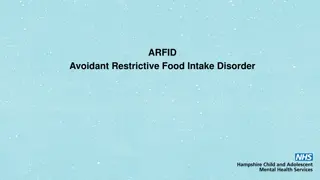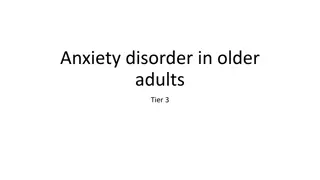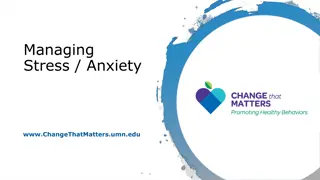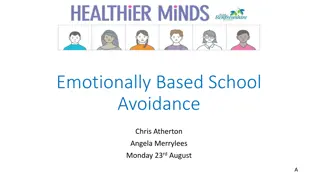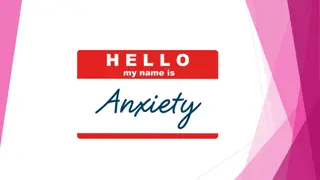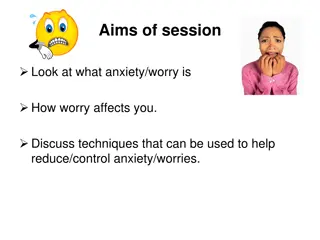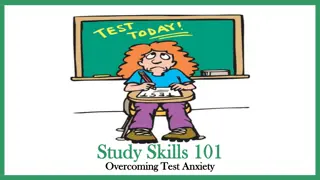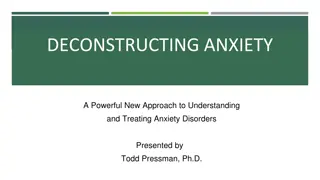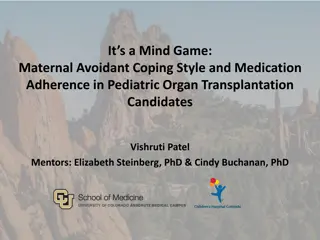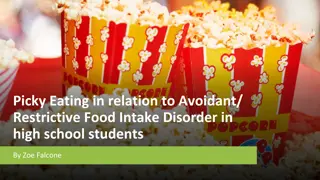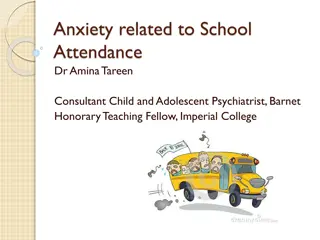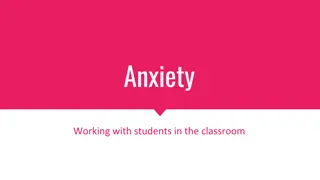Understanding Social Anxiety and Avoidant Behaviors
Social anxiety involves intense fear and avoidance of social situations, leading to catastrophic thinking and physiological reactions like performance anxiety. Individuals may anticipate criticism, rejection, or embarrassment, which can interfere with their functioning. This condition can manifest as specific fears like public speaking or generalized fears across various social interactions. It may result in social inhibition, feelings of inadequacy, and avoidance of situations that require contact with others. Overcoming these challenges involves addressing fear of criticism, rejection, and social scrutiny, and learning to manage emotions effectively.
Download Presentation

Please find below an Image/Link to download the presentation.
The content on the website is provided AS IS for your information and personal use only. It may not be sold, licensed, or shared on other websites without obtaining consent from the author. Download presentation by click this link. If you encounter any issues during the download, it is possible that the publisher has removed the file from their server.
E N D
Presentation Transcript
Fear of Social Situations Catastrophic Thinking Physiological Reactions to Social stress Avoidance
Specific or Generalized Fear of public speaking Fear of socializing Anticipates criticism or rejection Expects embarrassment or humiliation
Fear of social or performance situations Exposure always provokes fear The person knows its excessive Avoids or endures with anxiety Functional impairment Duration at least 6 months in kids Not illness or drugs Unrelated to another disorder
Fear of Most Social situations Fear of Social Scrutiny Interferes with functioning Recognized as excessive
Social Embarrassment Eating in public Writing in public Performance Anxiety Public Speaking Musical Performance
Shyness vs. Social Phobia vs. Avoidant Personality Disorder
Social inhibition Feelings of inadequacy Sensitive to criticism from others
Avoids work requiring contact with others Fears criticism Fears disapproval Fears rejection
Avoids others unless certain that he or she will be liked
Holds back emotions Shows restraint Fear of criticism Fear of embarrassment
Is overly preoccupied with fear of criticism Fears rejection by others in social situations Hates being the center of attention
Feels inadequate around others Acts show or inhibited Thinks he or she is less worthy than others
Sees self as socially inept Feels unattractive or unappealing Feels inferior to others Behavior is withdrawn, avoids eye contact
Reluctant to take risks Doesn t want to embarrass self
Social Contact Catastrophizing Self-Criticism reinforces low confidence Avoidance Anxiety Reduced
Social Contact Catastrophizing Self-Criticism reinforces low confidence Avoidance Anxiety Reduced
Social Contact Rational Thinking & Exposure Anxiety Reduced &
Develop Social Skills Stop Catastrophic Thinking Reduce Anxiety Stop Avoidance
Thoughts Obsession Worry Catastrophizing Feelings Fear Terror Embarrassment Actions Ritual or Avoidance
Social Skills Training Logical Analysis of Automatic Thoughts Differential Relaxation Graded In-vivo Exposure Coping Skills Training
Explain how avoidance is a way of coping Explain the negative reinforcement paradigm Avoidance helps you escape discomfort Avoidance lowers anxiety Because it works, it increases the chance that you will use it again as a way of coping Evaluate the pros and cons of using avoidance as a way of coping Ask the patient if he or she would like to learn a new way to cope
Instructions How to say hello Getting a date Making conversation Behavioral Rehearsal w/Feedback Practice with Safe Targets Self-Monitoring Graded Exposure
Learn the cognitive model Monitor negative thoughts Recognize catastrophizing and mind-reading Analysis of negative thoughts Rational responses
Identify sequence of catastrophic thoughts People will look at me I will do something to embarrass myself They will laugh at me The humiliation with be unbearable Assess the likelihood that this sequence will occur Evaluate the Evidence (reevaluate likelihood) Risk Management (reevaluate likelihood) Plans for coping (reevaluate likelihood)
Learn standard relaxation induction Practice maintaining relaxed state while involved in tasks Normalize breathing Muscle relaxation Practice in non-threatening situations Practice with graded in-vivo exposure
Desensitization hierarchy developed Start with the easiest item Cognitive Rehearsal Practice differential relaxation and decatastrophizing at each step
Construct desensitization hierarchy Choose an easy starting place Plan coping strategy Troubleshoot Assign as Homework Follow-up and Repeat
I cant tolerate rejection Embarrassment is horrible I m inadequate I have to be liked I m unworthy I m inferior to others I can t handle negative feedback
Historical analysis Evaluate evidence Advantages and disadvantages of the schema as if exercises Role play the alternative schema Identify alternatives



